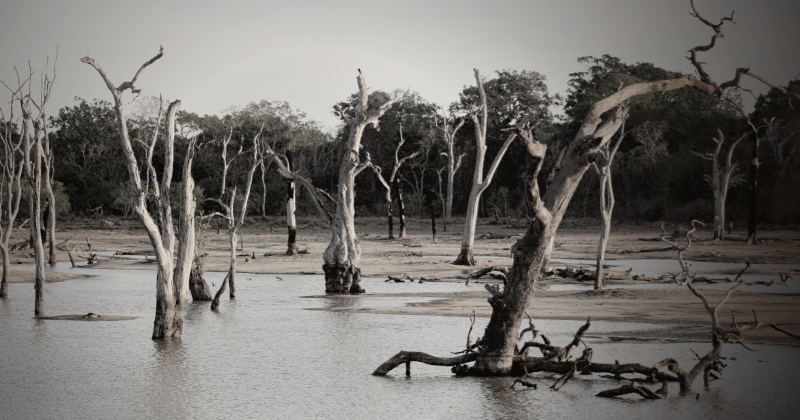At least they are needed to solve the problem of hydrogeological instability 26.58 billion euros. This is the value of the requests from local authorities registered on the Rendis platform (National Directory of interventions for soil protection) which amount to a total of 7,811. These are figures that emerge from the technical data sheet on hydrogeological instability drawn up by the Study Center of the National Council of Engineers (CNI).
Data which – according to the researchers – should not be surprising if we consider that 6.8 million inhabitants live in areas with medium flood risk and 2.4 million live in high risk flood areas, overall the 15% of the population. There are 2.1 million buildings in high and medium risk flood areas, 15% of the total.
In the last 20 years – they explain to the Study Center – the expenditure for interventions has been equal to 6.6 billion euros, for a total of 6,063 interventions and an average value of just over 300 million euros. It is estimated, from the various data available, that in order to “effectively” raise the level of safety against increasingly imminent risks, it would still take 8,000 prevention works for a cost just under 27 billion euros. In view of these needs, the National Plan for the mitigation of hydrogeological risk (ProteggItalia) launched in 2019, provides for allocations of 14.3 billion euros for the period between 2019 and 2030, part of which destined for emergency works connected calamitous events, interventions for the safety of territories and infrastructures, interventions for the mitigation of hydraulic and hydrogeological risk.
To these resources – continues the note from the Cni – are added those made available by the Pnrr equal to 2.4 billion euros for “Measures for the management of flood risk and for the reduction of hydrogeological risk” as part of the mission “Revolution green and ecological transition”. For the short term, therefore, there seem to be relatively sufficient public resources to carry out at least the most urgent interventions.
Again according to the assessments of the CNI Study Center, the critical issues appear to be linked rather to other factors. Meanwhile, it must be taken into account that the “front” of risk and hydrogeological instability is so widespread in the area that a continuous and capillary work of intervention would be needed which reveals objective limitations. Acting on bank reinforcements, on floodplains, watercourses, maintenance of abandoned areas, requires monitoring, planning and intervention activities that cannot always be carried out in a short time. In addition, there are programming elements that act as obstacles.
The total average duration of the works is 4.8 years. Almost half of this time goes away in administrative procedures and in so-called downtime. Then there is the issue of soil consumption which means – the researchers point out – that the problem of soil sealing in Italy shows no sign of diminishing. Moreover, in Italy the artificial ground cover is 7.13% of the total area compared to an average of 4% in Europe.
Perrini: «We need to act quickly by remodeling the mechanisms of the Prevention Plans»
“Against hydrogeological instability – says Angelo Domenico Perrini, president of the Cni – we need to act quickly by reshaping the management mechanisms of the existing prevention and contrast plans. Not only are financial resources more substantial than the ceiling of 16 billion available today, but a leaner management system not so much of emergencies as of prevention interventions. The Court of Auditors says it very clearly, which already in 2021 identified the weak elements of the intervention system against hydrogeological risk. Paradoxically, today we have an in-depth level of knowledge of where and how to intervene, but we are too concentrated on dealing with emergencies without being able to implement prevention works in a capillary way, which would greatly limit the damage in the event of catastrophes”.
«We also discount – continues the president of the Engineers – a limited level of land maintenance, rules and procedures for the implementation of prevention measures that are still too cumbersome, times for the completion of bureaucratic procedures longer than the times for the realization of hydrogeological risk prevention works and a lack of technical figures in the Bodies responsible for designing works to safeguard the territories . Focusing on finding financial resources at this time risks being misleading, as the planning of prevention works and the methods of managing them should be radically remodeled”.
Margiotta: «The programming of prevention works is lacking»
“From a series of elements collected – he says Joseph Maria Margiotta, president of the CNI Study Center – we believe that, with regard to hydrogeological instability, there is an emergency within the emergency, consisting in the fact that, despite the efforts made in recent years by public administrations and the government, the part relating to the planning of prevention works has been lacking due to the usual procedural complexities, regulatory burdens and other elements known in our country. We need a change of pace in programming and we need to strengthen the ability of local authorities to quickly start construction sites for the safety of the territory”.
«It must also be said – continues Margiotta – that the serious events that have recently hit Emilia-Romagna must push everyone, first of all us technicians, to change perspective. In the technical debate and in that relating to the planning of interventions to contrast hydrogeological risk, a variable must be taken into consideration that many pretend not to see or with which they prefer not to deal with, namely that of the climate change which is generating extreme events like those of the last few days. We must be aware that prevention interventions, in particular those linked to hydraulic risk, must pass to a sort of level 2.0, i.e. an upgrading of the standards to which reference has been made up to now, which will no longer be sufficient to deal with situations hitherto little known”.
© breaking latest news
published on:
